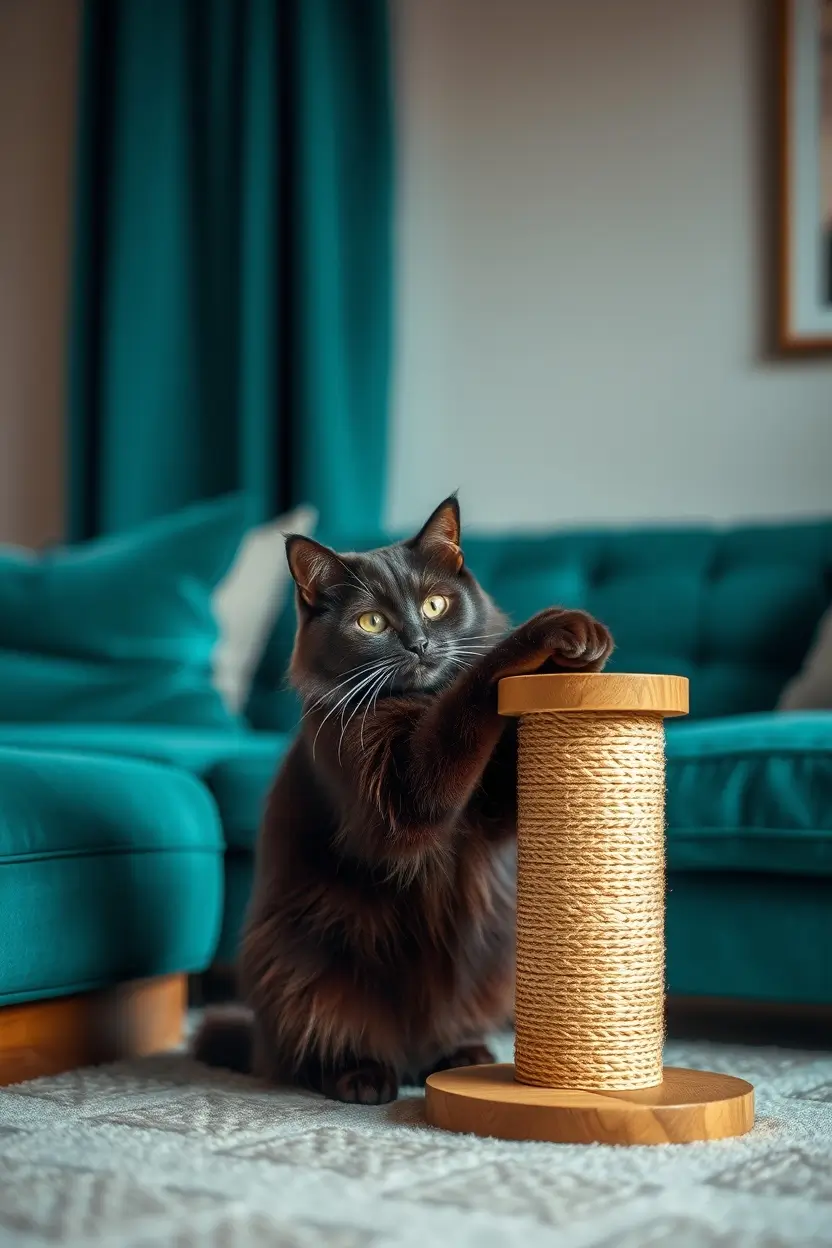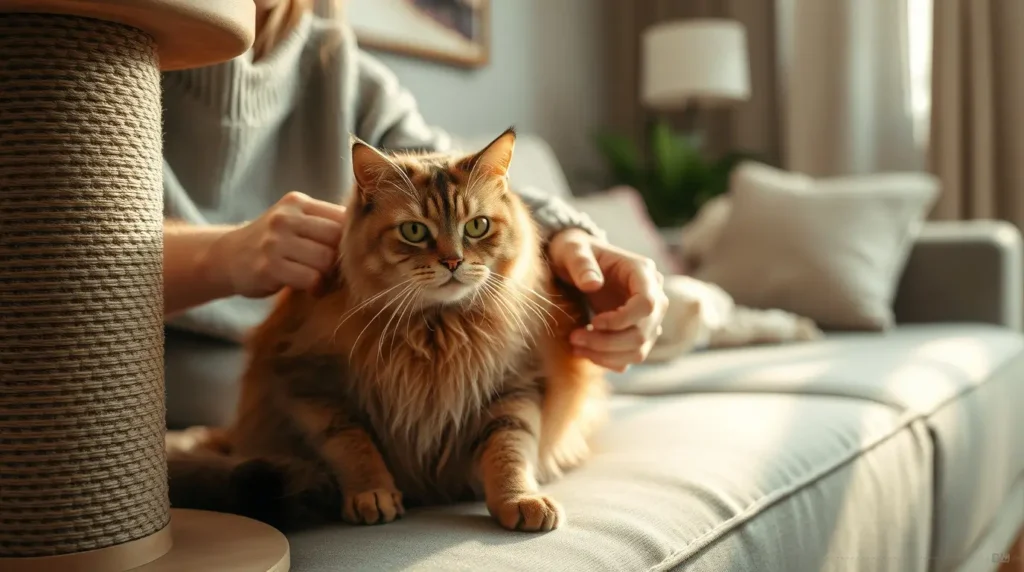At Whizpet, we understand the importance of providing pet owners with reliable, research-based information. Our team has spent countless hours studying the best alternatives to declawing a cat to help you make informed, humane choices for your feline friends. Through expert consultations, case studies, and analyzing veterinary reports, we’ve compiled the most effective and compassionate solutions to prevent unwanted scratching without resorting to declawing.
Declawing a cat is a controversial procedure that many veterinarians and animal welfare organizations strongly discourage. While some pet owners consider it a solution to scratching-related issues, declawing is painful and can lead to long-term health and behavioral problems. Fortunately, there are humane cat declawing alternatives that can help manage your cat’s scratching behavior while keeping their claws intact.
In this guide, we’ll explore the best cat declawing alternatives, their effectiveness, and how you can implement them at home to protect your furniture and maintain your pet’s well-being.
Why You Should Consider Cat Declawing Alternatives
Declawing is more than just nail removal; it involves amputating the last bone of each toe, which can result in:
- Chronic pain and arthritis
- Behavioral issues like biting and avoiding the litter box
- Difficulty walking and jumping
- Increased stress and anxiety
Many countries and U.S. states have already banned declawing due to its harmful effects. As a responsible pet owner, opting for humane cat declawing alternatives ensures your cat stays healthy, happy, and pain-free while still allowing you to protect your home.
Additionally, declawed cats may develop phantom pain and aggression, as they no longer have their primary defense mechanism. This can result in increased biting behavior, making declawing an ineffective and harmful solution. Instead, utilizing safe and effective cat declawing alternatives can help maintain both your cat’s well-being and your home’s condition.
Declawing also affects a cat’s balance and ability to climb, making them feel more vulnerable and anxious. Some cats even suffer from long-term mobility issues due to the unnatural pressure placed on their paws. Moreover, studies suggest that declawed cats have a higher likelihood of developing litter box aversion, as stepping on litter can be painful for them post-surgery. This leads to unwanted behaviors such as urinating outside the litter box.
By choosing cat declawing alternatives, such as regular nail trimming, soft nail caps, scratching posts, and positive reinforcement training, you can effectively protect your furniture while ensuring your cat’s physical and emotional health remains intact. These methods work with your cat’s natural instincts rather than against them, creating a more harmonious living environment for both you and your feline companion.

Best Alternatives to Declawing a Cat at Home
If you’re wondering what can I do instead of declawing my cat, here are some proven methods:
1. Regular Nail Trimming
Keeping your cat’s nails trimmed reduces their ability to cause damage. Follow these steps:
- Use a cat-specific nail clipper.
- Trim every 2-3 weeks.
- Avoid cutting the quick (the pink part of the nail) to prevent pain and bleeding.
- Introduce nail trimming gradually with treats to create a positive experience.
Why Nail Trimming Works
Regular nail trimming not only prevents destructive scratching but also keeps your cat comfortable. Overgrown nails can lead to discomfort, infections, and mobility issues. If you are unsure about trimming, consider taking your cat to a professional groomer. Cat declawing alternatives like nail trimming are a safe and humane way to protect both your furniture and your pet’s well-being.
2. Soft Nail Caps (Non-Surgical Alternative to Declawing a Cat)
Soft nail caps are small, rubber-like coverings that fit over your cat’s claws, preventing them from scratching furniture.
How to Apply Soft Nail Caps
- Trim your cat’s nails for a comfortable and secure fit.
- Apply a small amount of pet-safe adhesive to each cap.
- Place the cap over the claw and hold it for a few seconds.
- Replace every 4-6 weeks as nails grow.
Soft nail caps are a painless, non-invasive cat declawing alternative that allows cats to retract their claws naturally while reducing scratching damage.
3. Scratching Posts and Pads
Cats have a natural instinct to scratch, so providing designated areas helps redirect their behavior.
How to Choose the Right Scratching Post
- Material: Sisal, cardboard, or wood.
- Height: Tall enough for your cat to stretch fully.
- Placement: Near furniture or in your cat’s favorite areas.
- Variety: Use multiple types to keep your cat interested.
Training your cat to use scratching posts involves patience and positive reinforcement. Sprinkling catnip on the post and rewarding them with treats when they use it can be highly effective. Using cat declawing alternatives such as scratching posts not only protects your home but also supports your cat’s instinctual needs.
4. Furniture Protectors and Sticky Tape
If your cat insists on scratching furniture, you can make surfaces less appealing:
- Sticky tape: Cats dislike sticky textures, so placing double-sided tape on furniture can deter them.
- Plastic protectors: Furniture covers can shield couches and chairs from scratches.
- Anti-scratch sprays: Cat-safe deterrent sprays can help discourage scratching.
By using these deterrents alongside scratching posts, your cat will quickly learn to redirect their behavior. These methods serve as effective cat declawing alternatives without causing harm to your feline companion.
5. Behavioral Training and Positive Reinforcement
Training your cat to scratch designated areas takes time but is highly effective.
- Use catnip to attract your cat to scratching posts.
- Reward them with treats when they use the correct scratching area.
- Gently redirect them when they scratch furniture.
- Use clicker training to reinforce good behavior.
Consistency is key when training cats. By maintaining a structured approach, your cat will eventually understand the desired behavior. Opting for cat declawing alternatives such as training and positive reinforcement ensures long-term results without harming your pet.
6. Providing Engaging Playtime
Bored cats are more likely to scratch furniture out of frustration. Keep your cat engaged both mentally and physically by:
Using interactive toys.
- Engaging in daily play sessions.
- Rotating toys to keep them interested.
- Providing puzzle feeders for mental enrichment.

5 Most Demanding FAQs on Cat Declawing Alternatives
1. What are some alternatives to declawing a cat?
Alternatives include nail trimming, soft nail caps, scratching posts, furniture protectors, and behavioral training.
2. Are there non-surgical alternatives to declawing a cat?
Yes, options like nail caps, trimming, deterrent sprays, and sticky tape are effective non-surgical solutions.
3. What can I do instead of declawing my cat to stop them from scratching furniture?
Use scratching posts, sticky tape, deterrent sprays, and positive reinforcement training to redirect their scratching behavior.
4. Do soft nail caps hurt cats?
No, soft nail caps are painless and allow cats to retract their claws naturally.
5. How often should I trim my cat’s nails to prevent scratching?
You should trim your cat’s nails every 2-3 weeks to keep them dull and reduce damage.
Conclusion: Choosing the Best Cat Declawing Alternatives
Declawing is a painful and unnecessary procedure that can harm your cat’s health. Instead, try cat declawing alternatives like nail trimming, soft caps, scratching posts, and positive reinforcement training to protect your home and keep your feline happy.
By implementing these humane strategies, you can maintain a scratch-free environment while ensuring your cat remains comfortable and stress-free.
Ready to Switch to Humane Cat Declawing Alternatives?
Start today by trimming your cat’s nails or introducing a new scratching post! Your furry friend will thank you.
Related blog: For more detailed information about pet care

